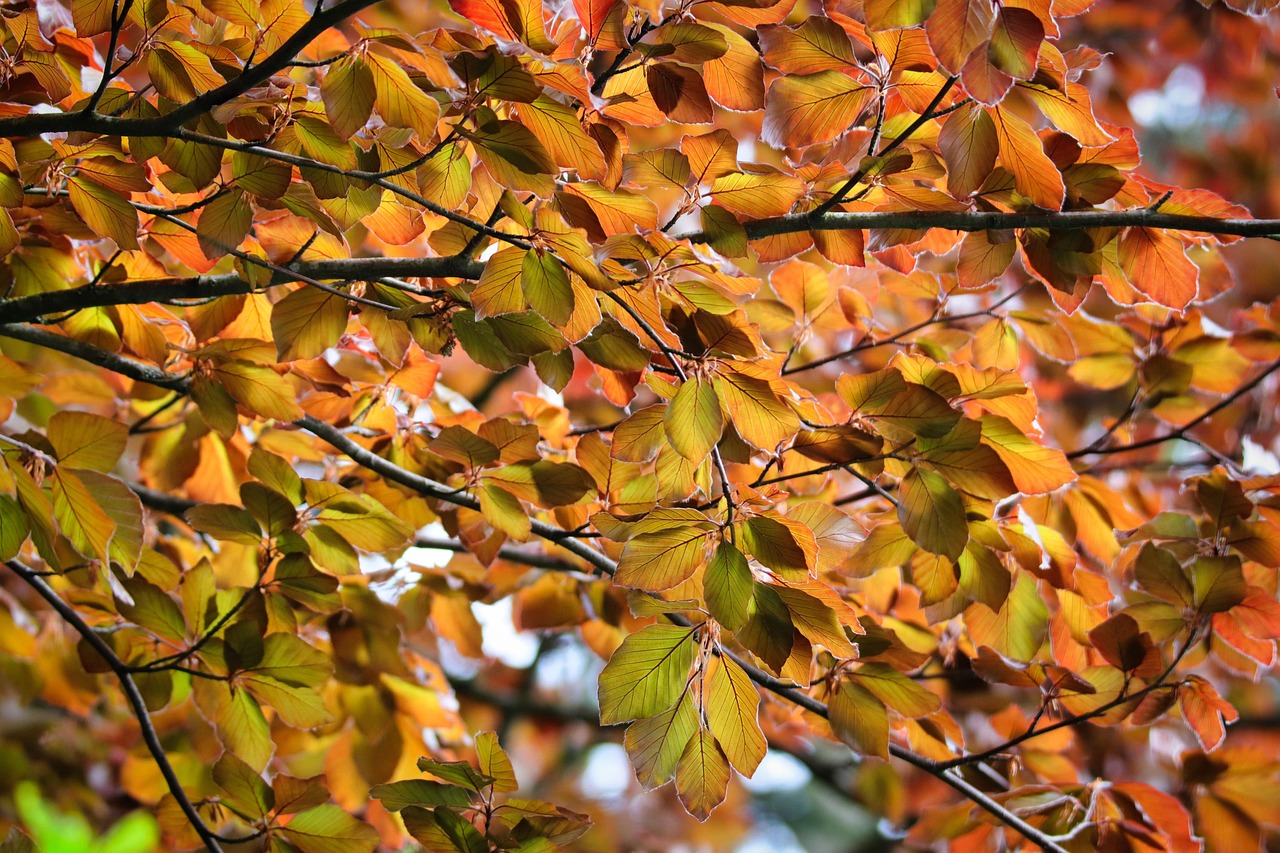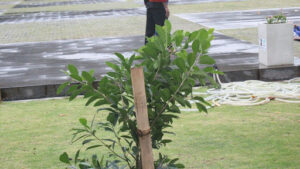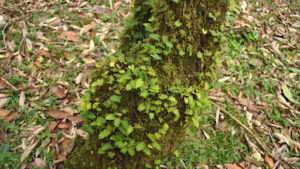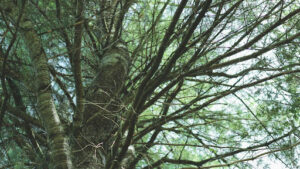American Beech Tree Sapling: How to Grow and Care

- October 7, 2025
- By Michael Woods
Growing my first American Beech tree sapling brought up a surprising amount of questions—especially about its quirks and longevity. The American Beech (Fagus grandifolia) stands apart for its slow, patient growth and its ability to quietly dominate a forest landscape for centuries. These saplings eventually become stunning shade trees with smooth, silvery-gray bark and a broad, spreading canopy.
Introduction to the American Beech Tree Sapling
Here’s what stands out about the American Beech:
- Native to the eastern United States and Canada, it’s the only North American beech species.
- It can reach heights of 70-80 feet, with spreads from 40-80 feet in the right spot.
- Known for its dense foliage and shallow roots—it’s tough on companion plants!
- The American beech leaf shape is distinct: oval, with pointed tips and prominent veins, making it easy to recognize in any forest or yard.
- Produces beechnuts—a snack for wildlife and a treat for foragers, typically ripening each fall.
A quick comparison of beech types:
| Variety | Typical Height | Notable Traits |
| American Beech (F. grandifolia) | 70-80 ft | Slow-growing, smooth gray bark |
| European Beech (F. sylvatica) | 60-70 ft | Copper-toned leaves, ornamental uses |
There’s something oddly peaceful about sitting beneath a mature beech, watching squirrels and turkeys dart around, especially when you realize these trees have seen centuries pass by.
It’s not all simple—planting and caring for these trees involves patience, as American beeches are tough to transplant and need space to thrive. As I learned, understanding these nuances from the very start can make all the difference when caring for a sapling.
Best Growing Conditions for an American Beech Tree Sapling
When I think about planting an American beech tree sapling, location is the first thing that pops into my mind. These trees, honestly, need a good bit of room because they’ll eventually stretch out and get pretty massive. I try to find a spot that gets gentle morning sun or some light shade for at least a part of the day—total darkness won’t do, but neither will hot, baking sunlight all day long. Young beech saplings absolutely thrive when these basic conditions are met.
Here’s a handy table that breaks down the core growing needs:
| Condition | Optimal Value |
| Sunlight | Partial shade, dappled light |
| Soil Type | Moist, well-draining, rich |
| Soil pH | 5.0 – 6.5 (slightly acidic) |
| Spacing | 40–50 feet from other trees |
| Hardiness Zones | USDA 3–9 |
Some important points to consider when picking where to put an American beech sapling:
- Check that the soil drains well after a heavy rain—standing water is bad news for the roots.
- Avoid sites with high foot traffic or heavy machinery, as the roots are easily damaged.
- Test your soil pH; if it’s too alkaline, mixing in compost or peat moss helps swing it more acidic.
If I want this tree to do well year after year, I have to think ahead—am I giving it enough space to spread out? Will neighbors complain when the shade reaches their yard? It’s these practical details that make all the difference.
Letting a beech sapling grow in the right spot leads to strong roots, healthy leaves, and a tree you’ll be proud of decades into the future.
How to Plant an American Beech Tree Sapling Properly
When I first tried planting an American beech sapling, I realized quickly that it’s not just a quick hole-and-go process. Successful planting really comes down to planning and giving the roots their best possible start.
Here’s exactly how I go about it:
- Pick the perfect spot. I look for a spot with partial shade, well-drained soil, and a spot that’s free from big foot traffic or heavy equipment. A beech sapling will need lots of room to spread out, so I try to give it at least 40-50 feet from other trees or structures.
- Test the soil. Beech trees prefer slightly acidic soil—pH between 5.5 and 6.5 is ideal. If my soil’s too alkaline, I might mix in a little compost or peat moss to bring the pH down and improve how the soil drains.
- Dig a proper hole. I make my planting hole twice as wide as the root ball but only as deep as the root flare (that’s where the trunk starts to widen at the bottom). This gives the roots plenty of space to settle in without being buried too deeply, which can cause them to rot.
- Gently remove the sapling from its container (or burlap if that’s what I have), aiming to disturb the roots as little as possible. For bare-root saplings, I make a small mound in the bottom of the hole and spread the roots over it. Then I fill in around the roots with the original soil—no need for lots of fertilizer right away.
- Slow and steady watering is key. Right after planting, I water deeply, letting the soil settle naturally around the roots. I almost always add a ring of mulch around the base (but not up against the trunk) to lock in moisture and stop weeds from starting up.
I’ve found that if you start beech tree seedlings with indirect sunlight and only move them to stronger light after their first few leaves, like gradually increasing direct light, the saplings really take off and look healthier all season.
Here’s a quick table I keep for reminding myself about the basics:
| Step | Details |
| Spacing | 40-50 feet apart |
| Sunlight | Partial shade is best |
| Soil Requirements | Slightly acidic, well-drained |
| Watering | Deep, steady, don’t overwater |
| Mulching | 2-3 inches, away from the trunk |
Patience is everything with beech saplings. They don’t like being moved, so once you pick your spot and plant right the first time, you’re good to go for years to come. And believe me, those first few seasons make all the difference in how your tree settles in.
Watering and Soil Requirements for an American Beech Tree Sapling
I’ve had my share of surprises digging into the needs of the American beech tree, and I can say, these saplings aren’t as forgiving as some yard trees. They’re picky about their water and downright stubborn about their soil. If you want that little sapling to grow into a big, shady beauty, you’ll have to pay close attention, especially in the first few years.
Getting the watering right is huge for American beech saplings. Here’s what works for me:
- Water deeply and slowly—think about a slow hose soak, not sprinklers. Aim for at least 1 inch of water per week, more if the weather’s hot and dry.
- Always let the top two inches of soil dry out between waterings. This keeps the roots healthier and discourages rot.
- Skip watering when the ground is frozen and pick it back up in spring. Overwatering in winter? It’ll just make the roots unhappy.
Now, about the soil. American beech trees really dislike compacted or soggy ground. I test the soil first and aim for slightly acidic soil between pH 5.5 and 6.5. Take a look at this table for quick reference:
| Soil Factor | Beech Sapling Preference |
| Drainage | Well-draining, never soggy |
| pH Level | 5.5–6.5 (Slightly acidic) |
| Composition | Rich in organic matter |
| Compaction | Loose, never compacted |
If your soil is heavy clay or leans alkaline, mix in compost or peat moss. I also keep mulch around the root area, but not up against the trunk—it keeps moisture even and weeds away.
- Don’t plant these trees near sidewalks or spots where the ground gets packed down.
- Avoid salty or polluted soil, which really puts stress on beech saplings—more reasons to avoid city spots.
- Add new compost around the base each spring to encourage the right soil conditions.
In my experience, a healthy American beech sapling needs a careful balance: the right amount of water, room for breathability, and a soil mix that feels loose and rich—not dry and hard like a parking lot.
If you start with the right conditions and stay consistent, your young beech tree won’t just survive—it’ll slowly take over as the new favorite spot in your yard.
Fertilizing Tips to Support a Healthy American Beech Tree Sapling
Fertilizing an American beech sapling isn’t something I do on autopilot. I go slow and pay attention to what the tree actually needs. Too much fertilizer can do more harm than good. What I’ve learned from growing these slow starters is that a light hand goes a long way.
Here’s how I break it down every season:
- Use a balanced, slow-release fertilizer once in early spring—before bud break.
- I keep it simple: 1 pound of fertilizer for every 100 square feet under the canopy.
- If I’m using organic methods (like well-rotted compost), I spread about 1 bushel per inch of the trunk or 100 square feet.
- Always water deeply after fertilizing so the nutrients reach the roots, not just the surface.
- Avoid high-nitrogen products. They can push too much leafy growth, making the sapling weak.
If soil health is a concern or if you suspect disease, modern treatments like potassium-based solutions are available—just not for every homeowner. Curious folks can look up things like PolyPhosphite 30 for more details on advanced disease management, though I stick to the basics for my own yard.
| Fertilizer Type | Amount | Application Time |
| Balanced synthetic | 1 lb/100 sq ft | Early spring |
| Organic compost | 1 bushel/inch trunk diameter | Early spring |
| Granular (general) | 2 lbs/100 sq ft | Early spring |
Healthy soil beats extra fertilizer every time. If the sapling looks green and is slowly growing, I hold back on feeding—sometimes, less is more when it comes to happy beech trees.
Pruning and Maintenance of an American Beech Tree Sapling

When I care for a young American beech tree, I think regular pruning and gentle maintenance make a real difference. The best tip I can offer is to only prune lightly and never all at once—taking off too much stresses the tree. I stick to late winter or early spring for pruning, when the tree is still dormant and before any new leaves show up. This timing helps it bounce back faster and lowers the risk of disease, according to advice about southern beech pruning I found on seasonal pruning tips.
Here’s how I usually handle it:
- Always use clean, sharp pruners to avoid tearing the bark or spreading unwanted problems.
- Focus on removing broken, diseased, or dead branches first. These can cause bigger issues if left alone.
- Thin out branches that cross or tangle—good airflow and a clear shape keep the sapling healthier.
- Never remove more than 25% of the tree’s branches in a single go.
Proper pruning isn’t about forcing a shape but helping the tree grow strong and well-balanced. I step back and check the sapling’s structure before making any cuts, so I don’t overdo it.
Sometimes, patience is the most important tool. Growth with beech trees is slow, but small, regular tweaks each year make for a solid, lasting tree.
Here’s a quick guide for timing and what to trim:
| Task | Best Time | Purpose |
| Remove dead/damaged wood | Late winter/early spring | Prevents disease and encourages healing |
| Light shaping/thinning | Late winter/early spring | Maintains structure, encourages strong growth |
If I notice any fast-spreading problems, like sudden dieback or odd leaf color, I always check again and prune as needed right away. The key thing I remind myself: less is more—beech saplings reward patience and light, regular care.
Common Pests and Diseases Affecting an American Beech Tree Sapling

When it comes to growing American beech tree saplings, I’ve noticed that people usually worry about pests and diseases only after they start seeing symptoms. But honestly, a proactive approach is your best bet. Even though American beeches are known for not having a ton of problems, the few that do come around can be pretty serious.
Here’s a rundown of the main pests and diseases I keep an eye out for:
- Beech Scale Insect: These tiny, white, cottony bugs love the bark. While they look harmless, they open the door for beech bark disease – a combo attack with a fungus that can wreck the tree if ignored. Early signs are white fluffy dots on branches and bark, plus any oozing red spots.
- Beech Blight Aphids: These show up as woolly, blue-white masses along twigs. A heavy infestation isn’t pretty, and while they don’t kill the sapling outright, they drop honeydew everywhere. This sticky mess grows sooty mold – black gunk that shuts down photosynthesis fast.
- Beech Leaf Disease (BLD): This is something new and important. Leaves get dark green stripes, twist up, and look leathery. Year after year, you’ll see fewer new leaves and buds. Young saplings are especially at risk. Not much is known about how BLD spreads, but it’s slow-moving and often deadly in the long run.
- Root Rot and Leaf Scorch: Like problems in Japanese maples, beech saplings can suffer root rot if the soil is soggy, or leaf edges may brown and wilt if water is lacking. Well-drained, moist soil is key.
Here’s a quick table to keep pest and disease signs straight:
| Problem | Early Signs | Simple Actions |
| Beech Scale | White spots, red bark splotches | Scale insecticide, physical wipe |
| Blight Aphids | Fluffy, blue-white masses on twigs | Water spray, insecticidal soap |
| Beech Leaf Disease | Striped/curling leaves, slow decline | Remove leaves, monitor soil |
| Root Rot | Wilting, poor growth, pale leaves | Improve drainage |
| Leaf Scorch | Brown/wilted edges | Add mulch, check watering |
- Inspect bark and leaves weekly, especially during spring and fall
- Spray aphids and scales off with water or use insecticidal soap as soon as you notice them
- Remove and destroy leaves that look striped, curled, or leathery to slow down BLD (it’s not a cure, but it helps)
Saplings are most vulnerable in their first five years, so stay alert—catching issues early is the best way to keep them strong and healthy.
Long-Term Growth and Care Tips for a Mature American Beech Tree Sapling

I’ve learned that looking after a mature American beech tree sapling isn’t hard if you’re steady and pay attention to a few details over the years. Beech trees take their time to grow, but with the right care, they can last for generations and become a real centerpiece in the yard.
Here’s a quick look at what to expect with mature growth:
| Feature | Typical Value |
| Annual Growth | 6–9 inches per year |
| Mature Height | 50–80 feet |
| Mature Spread | 40–80 feet |
| Average Lifespan | 200–300 years |
| First Nut Production | 40 years or more |
When thinking long-term, here’s how I usually keep things on track:
- Stick with deep watering during the hottest months, but let the soil dry slightly before the next round. As the tree gets older, it will handle drier spells better, but drought can still stress it out.
- Leave a broad mulch ring around the base—at least a few feet. This guards roots from heat, holds in water, and keeps competing weeds back. Just don’t let the mulch touch the trunk directly.
- Check the tree every spring and fall for dead limbs or signs of disease, like odd coloring or sap leaks. Prune only when you see branches that are dead, broken, or rubbing together—this stops bigger problems before they start.
- Skip extra fertilizer unless a soil test says otherwise. American beeches grow just fine on their own most years.
One thing I’ve noticed: As beech trees grow older, their bark stays smooth and gray, and their canopy really thickens up. That eventually makes dense shade for grass and other plants below, so I always plan other landscaping with this in mind.
In short, giving the tree enough space, not overdoing water or fertilizer, and pruning out damaged growth every year will keep a mature beech tree thriving. Over time, it’s about steady hands-off care rather than constant fussing. Watching a beech tree hit its stride in a spot you picked is one of those slow rewards that just gets better as the years go on.
Taking care of an American beech tree as it grows older can be simple. Give your tree enough water, but don’t overdo it. Mulch around the roots helps keep moisture in the soil. Trimming old or dead branches is important to help the tree stay healthy. If you want help caring for your beech tree, visit our website to learn more and get a quote today!
Frequently Asked Questions
How much sunlight does an American beech tree sapling need?
I find that American beech tree saplings grow best when they get at least four hours of direct sunlight each day. They can also do well in partial shade, but too little light can slow their growth.
How often should I water my American beech sapling?
I usually water my sapling once a week, making sure it gets about 1 inch of water. If it rains, I skip watering. During hot or dry weather, I check the soil more often and water when the top two inches feel dry.
What is the best soil for an American beech tree sapling?
I recommend planting in moist, well-draining, slightly acidic soil. If the soil is too hard or holds water, I add compost to help with drainage and give the tree more nutrients.
When is the best time to plant an American beech sapling?
The best time for me to plant is in late winter or early spring, before new leaves start to grow. This gives the sapling time to make strong roots before summer gets hot.
Do American beech trees need fertilizer?
I like to use a balanced, slow-release fertilizer in early spring. I spread it around the base, but not too close to the trunk. I also use compost sometimes. Too much fertilizer can hurt the tree, so I use it sparingly.
How do I keep my American beech sapling healthy?
I watch for signs of stress like yellow leaves, wilting, or bugs. If I see these, I act quickly—watering, pruning, or treating for pests. Regular care and quick action help my sapling grow strong and healthy.
